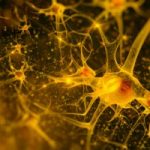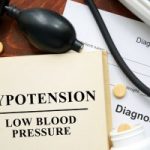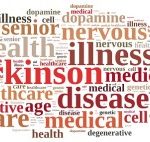Parkinson’s disease is a neurological condition that affects nearly 10 million people. There is currently no cure for Parkinson’s disease, so over time the disease progresses and worsens. Although there is treatment to help slow down this progression, ultimately it takes over a person’s life, making them unable to care for themselves.
Although Parkinson’s disease has been around for a while, each year more new information comes out that brings us closer to a potential cure and even more effective treatment options.
Advertisement
Here are Bel Marra Health’s top Parkinson’s disease news stories, including prevention and treatment breakthroughs that we hope will offer better outcomes in 2016.
Parkinson’s Prevention: Parkinson’s disease and dementia prevented by immune regulating
gene
Researchers have found a gene that can help prevent Parkinson’s disease.
 Function changes in an immune regulating gene have been found to prevent Parkinson’s disease and dementia, according to researchers at the University of Copenhagen. The regulating gene is known as Interferon-beta and treatment of it was revealed to prevent neurological death and disease in trial models of Parkinson’s disease.
Function changes in an immune regulating gene have been found to prevent Parkinson’s disease and dementia, according to researchers at the University of Copenhagen. The regulating gene is known as Interferon-beta and treatment of it was revealed to prevent neurological death and disease in trial models of Parkinson’s disease.
An estimated 10 million people are living with Parkinson’s disease (PD), which is a progressive, neurological disease with no current cure. Motor skills and cognitive function become impaired with Parkinson’s disease, and many sufferers of Parkinson’s go on to develop dementia or Alzheimer’s disease.
The human brain consists of 100 billion neurons, and researchers found that the Interferon-beta (IFNβ) gene is essential for neurons to recycle waste proteins. Without Interferon-beta waste proteins would accumulate and result in dementia with Lewy bodies (DLB), which cause neuron death over time. Learn More
Hypotension and Parkinson’s: In Parkinson’s disease, managing orthostatic hypotension improves
cognition and balance
Hypotension can cause implications for those suffering from Parkinson’s disease.
 In Parkinson’s disease, managing orthostatic hypotension improves cognition and balance. Orthostatic hypotension is a form of low blood pressure that occurs when going from a sitting or lying position to a standing one. It’s commonly found in Parkinson’s disease and current recommendations to manage it involve general measures and medications that pose minimum risk or adverse side effects.
In Parkinson’s disease, managing orthostatic hypotension improves cognition and balance. Orthostatic hypotension is a form of low blood pressure that occurs when going from a sitting or lying position to a standing one. It’s commonly found in Parkinson’s disease and current recommendations to manage it involve general measures and medications that pose minimum risk or adverse side effects.
It is important to properly manage orthostatic hypotension because it can have implications on cognition and balance. There are both pharmacological and non-pharmacological ways to treat and manage orthostatic hypotension in Parkinson’s disease. Non-pharmacological methods include drinking water and salt, which have been shown to increase plasma volume and maintain blood pressure, and wearing compression stockings so the blood does not rush or pool in the legs.
Low blood pressure, or hypotension, can commonly occur in Parkinson’s disease. Causes of low blood pressure in Parkinson’s include changes in bodily positions, exercising, eating, warm and cold weather and even Parkinson’s medication. Learn More
Parkinson’s Treatment: Parkinson’s clinical trial gets fast tracked
A new study found a drug that can help slow down the effects of Parkinson’s disease.
 A drug commonly used to treat liver disease holds promise in slowing down progression of Parkinson’s disease. The discovery comes from scientists at the University of Sheffield.
A drug commonly used to treat liver disease holds promise in slowing down progression of Parkinson’s disease. The discovery comes from scientists at the University of Sheffield.
The findings have put the drug – ursodeoxycholic acid (UDCA) – on the fast track for clinical trials in Parkinson’s patients.
Parkinson’s UK Senior Research Fellow, Dr. Heather Mortiboys, said, “We demonstrated the beneficial effects of UDCA in the tissue of LRRK2 carriers with Parkinson’s disease as well as currently asymptomatic LRRK2 carriers. In both cases, UDCA improved mitochondrial function as demonstrated by the increase in oxygen consumption and cellular energy levels.” Learn More
Parkinson’s and Brain Signals: In Parkinson’s disease, dopamine deficiency slows voluntary movement
There is less dopamine transmission and slowness of movements in Parkinson’s disease.
 Dopamine deficiency and low D1 receptors in Parkinson’s disease create slowness of moment, according to latest research. Dopamine is a neurotransmitter which is responsible for sending signals between multiple brain regions and the substantia which is critical for the smoothness and purpose of movements. Loss of dopamine can result in impairment of movement, which is commonly seen in Parkinson’s disease.
Dopamine deficiency and low D1 receptors in Parkinson’s disease create slowness of moment, according to latest research. Dopamine is a neurotransmitter which is responsible for sending signals between multiple brain regions and the substantia which is critical for the smoothness and purpose of movements. Loss of dopamine can result in impairment of movement, which is commonly seen in Parkinson’s disease.
Parkinson’s disease is a condition where damage has been done to neurons in the area of the brain that controls movement. These neurons become damaged and die, which reduces the production of dopamine and results in slowness or interruptions of movement.
Lack of dopamine to D1 receptors disrupts information flow, leading to difficulties with initiating movement. Learn More
Parkinson’s and Sleep: Parkinson’s disease, Lewy body dementia and REM sleep behavior
disorder (RBD) related
Advertisement
REM sleep behavior disorder and Lewy body dementia are both related to Parkinson’s.
 Recent research has found that Parkinson’s disease, Lewy body dementia and REM sleep behavior disorder are all related. When we are asleep our body goes through different sleep phases, the deepest of which is known as rapid eye movement, or REM. During normal REM our body becomes temporarily paralyzed, and this is where we beginning dreaming. People with REM sleep behavior disorder (RBD) do not become paralyzed and instead act out their dreams. This can be quite dangerous, not only for the individual, but for others around them as well.
Recent research has found that Parkinson’s disease, Lewy body dementia and REM sleep behavior disorder are all related. When we are asleep our body goes through different sleep phases, the deepest of which is known as rapid eye movement, or REM. During normal REM our body becomes temporarily paralyzed, and this is where we beginning dreaming. People with REM sleep behavior disorder (RBD) do not become paralyzed and instead act out their dreams. This can be quite dangerous, not only for the individual, but for others around them as well.
Benjamin L. Walter, M.D., director of the Parkinson’s and Movement Disorders Center at University Hospitals Case Medical Center, said to Neurology Advisor, “Normally, during REM sleep, reduced serotonergic activity in the brain leads to atonia or loss of muscle tone through action in a network involving brainstem nuclei including the locus subcoeruleus and magnocellularis nucleus. In RBD, this mechanism is dysfunctional, possibly due to pathology in this circuit, and there is not loss of tone during REM sleep.” Learn More
